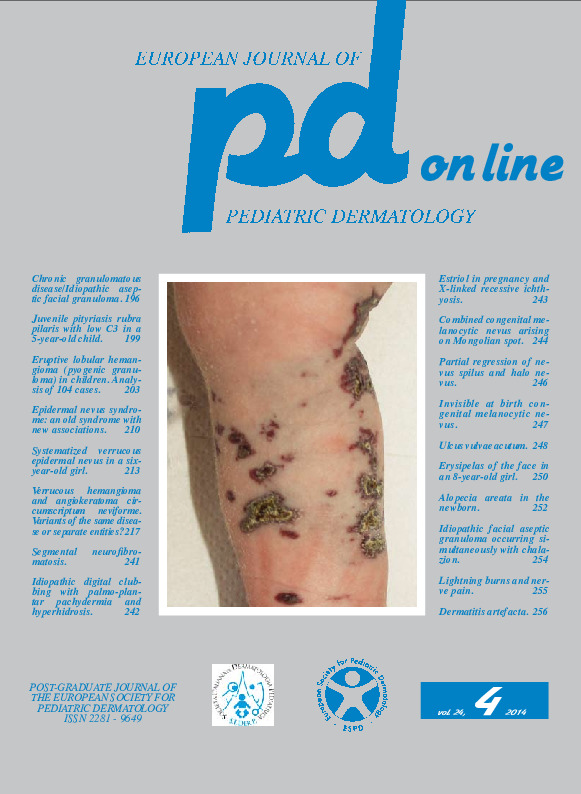Idiopathic facial aseptic granuloma occurring simultaneously with chalazion.
Downloads
How to Cite
Natale M. 2014. Idiopathic facial aseptic granuloma occurring simultaneously with chalazion. Eur. J. Pediat. Dermatol. 24 (4): 254.
pp. 254
Abstract
In the child you can observe not exceptionally on the face granulomatous nodules, generally a single nodule, which increase in volume for 1-2 months and then, once reached their maximum diameter, remain unchanged for months and finally regresse slowly within periods of time varying from 6 to 18 months. The etiology of these self-healing nodules is not known, but they are considered a hypersensitivity reaction to insect bites or a granulomatous reaction similar to that observed in chalazion and granulomatous rosacea (1, 2). The clinical history of the current case speaks in favor of this second pathogenetic hypothesis. Before you conclude for idiopathic facial aseptic granuloma of childhood and monitor clinically the lesion waiting for the spontaneous resolution, it seems appropriate to test especially in males the oxidative capacity of neutrophils to rule out chronic granulomatous disease.Keywords
Idiopathic facial aseptic granuloma, Chalazion

